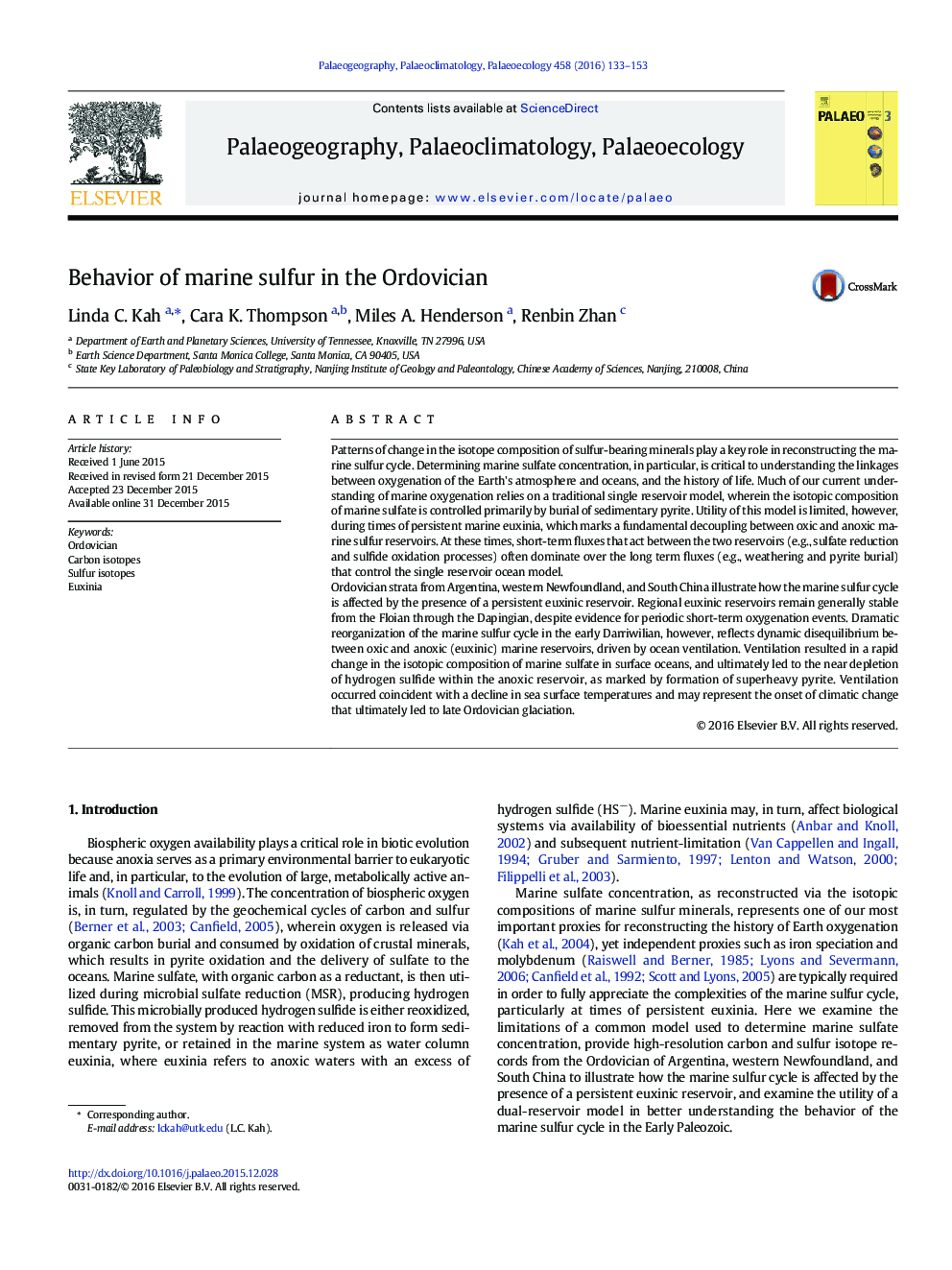| کد مقاله | کد نشریه | سال انتشار | مقاله انگلیسی | نسخه تمام متن |
|---|---|---|---|---|
| 4465586 | 1622133 | 2016 | 21 صفحه PDF | دانلود رایگان |

• Ordovician strata illustrate how marine sulfur is affected by persistent euxinia.
• Rorganization of sulfur cycle in Darriwilian reflects marine ventilation.
• Ventilation results first superheavy pyrite recorded in the Paleozoic.
• Ocean ventilation may represent the onset of Late Ordovician climatic change.
Patterns of change in the isotope composition of sulfur-bearing minerals play a key role in reconstructing the marine sulfur cycle. Determining marine sulfate concentration, in particular, is critical to understanding the linkages between oxygenation of the Earth's atmosphere and oceans, and the history of life. Much of our current understanding of marine oxygenation relies on a traditional single reservoir model, wherein the isotopic composition of marine sulfate is controlled primarily by burial of sedimentary pyrite. Utility of this model is limited, however, during times of persistent marine euxinia, which marks a fundamental decoupling between oxic and anoxic marine sulfur reservoirs. At these times, short-term fluxes that act between the two reservoirs (e.g., sulfate reduction and sulfide oxidation processes) often dominate over the long term fluxes (e.g., weathering and pyrite burial) that control the single reservoir ocean model.Ordovician strata from Argentina, western Newfoundland, and South China illustrate how the marine sulfur cycle is affected by the presence of a persistent euxinic reservoir. Regional euxinic reservoirs remain generally stable from the Floian through the Dapingian, despite evidence for periodic short-term oxygenation events. Dramatic reorganization of the marine sulfur cycle in the early Darriwilian, however, reflects dynamic disequilibrium between oxic and anoxic (euxinic) marine reservoirs, driven by ocean ventilation. Ventilation resulted in a rapid change in the isotopic composition of marine sulfate in surface oceans, and ultimately led to the near depletion of hydrogen sulfide within the anoxic reservoir, as marked by formation of superheavy pyrite. Ventilation occurred coincident with a decline in sea surface temperatures and may represent the onset of climatic change that ultimately led to late Ordovician glaciation.
Journal: Palaeogeography, Palaeoclimatology, Palaeoecology - Volume 458, 15 September 2016, Pages 133–153